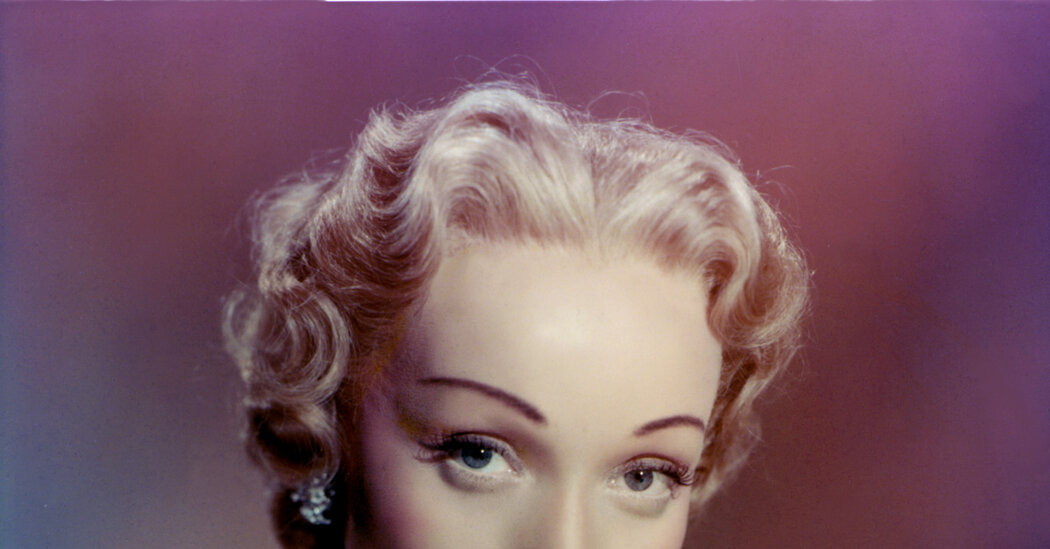If the 20th century could claim an It girl, she probably would be Marlene Dietrich: movie star, nightclub chanteuse, fashion and jewelry icon, and a German celebrity who supposedly told Hitler to get lost.
Born in 1901, she went from obscure Berlin chorus girl to international star in the 1920s and ’30s, shaking up the fashion world by weaving androgyny into classic feminine glamour. She was Paramount’s answer to MGM’s Greta Garbo, and by some measures her legacy has outlasted almost every movie star and fashion icon of her era.
Witness her influence well into the 21st century: A mini-series about her life, starring Diane Kruger, is in the works; there are plans for Jessica Lange to portray Dietrich in a TV project from Ryan Murphy set during her nightclub era; an exhibition of some 250 images of the star closed in January at the International Center of Photography in New York; and a play with music about her life just completed a run in Berlin, and its star, Sven Ratzke, won raves for his portrayal of Dietrich.
Her influence also has remained on the fashion radar, as in Dior’s pre-fall 2024 collection, which showcased the trousers-and-tie look that she helped popularize when, as a cabaret singer in tails and a top hat, she kissed a female audience member on the lips in the 1930 movie “Morocco.”
But as much as she influenced fashion, Dietrich’s legacy has especially been celebrated in the jewelry world.
“In our collection we have a sandalwood bracelet by the jeweler René Boivin covered with gold plates, which was a gift from the Paris Police prefect in 1933,” Silke Ronneburg, the curator in charge of the Marlene Dietrich Collection at the Deutsche Kinemathek museum in Berlin, said in a recent phone interview. “The story is that when she arrived at Gare St.-Lazare in Paris, she wore trousers and a men’s tie. She looked like a man among the other men.”
It was illegal for Frenchwomen to wear trousers at the time — the 1799 law was officially on the books until 2013 — but the chief of police and his wife presented the bracelet to Dietrich as a gesture of good will. And she wore it with the same trouser outfit when she departed Paris a few days later.
Arguably her most famous piece, however, was the Van Cleef & Arpels ruby and diamond jarretière bracelet, which drew more than $4.5 million from an anonymous buyer during a Christie’s New York auction in June 2023. It had been part of the collection of Anne Eisenhower, a socialite and interior designer who was a granddaughter of President Dwight D. Eisenhower.
The jarretière bracelet — the French term translates to garter in English — was thought to have been assembled in 1937 from a couple of pieces created by Louis Arpels. Its striking accent was a platinum disc covered with dozens of cushion-cut rubies, perched asymmetrically atop twin bands of baguette- and pavé-set white diamonds.
The piece was made famous when Dietrich wore it in the 1950 film “Stage Fright” and to the Academy Awards in 1951. She is said to have kept it until her death in 1992.
“It is, simply put, one of the most important jewels ever created,” Claibourne Poindexter, a senior jewelry specialist at Christie’s New York, wrote in an email. “It doesn’t really fit into any period. It’s not Art Deco jewelry. It’s not retro jewelry. It really is its own work of art. The incredible price it made the second time it was sold at auction is a testament to the design of this marvelous jewel and Marlene Dietrich as a style icon.”
“In the evening,” he wrote, “Ms. Dietrich wore her most important jewels with equally elaborate gowns by Christian Dior, the jewels often set with diamonds and emeralds or rubies, two of her favorite colored gemstones.”
No one is quite sure how Dietrich acquired the jarretière bracelet, or who gave the actress a matching set — a 128-carat diamond and emerald bracelet and a 97-carat cabochon emerald and diamond brooch — made by Trabert & Hoeffer-Mauboussin, one of Hollywood’s most celebrated jewelers. A similar emerald and diamond bracelet with an egg-shape cabochon emerald, which Dietrich often wore as a ring, was made by Paul Flato, another go-to jeweler for silver screen icons.
Dietrich wore those splashy jewels in three movies, including “Desire” (1936), in which she portrayed a jewel thief. But then jewelry was everywhere in her movies, and even in titles such as “Golden Earrings,” a 1947 romantic spy flick co-starring Ray Milland.
Much of that glamour had given way during World War II when Dietrich adopted a somewhat more conservative look as she famously toured with the U.S.O. in the mid-1940s to entertain Allied troops in Europe and North Africa, a decision that was said to have outraged Hitler, who supposedly had personally invited her to return to Germany (she had renounced her German citizenship to become an American citizen in 1939).
“During World War II, she had an unerring instinct for good appearance, and in 1942 wore a heavy silver bracelet with gold-plated pearls with matching earrings by Cartier,” Ms. Ronneburg of the Deutsche Kinemathek museum said. “It’s important because she wore it during her war bond tour, driving through cities in an open car.”
That Cartier ensemble was seen as a reflection of the era, striking but with a more muted tone.
“Marlene Dietrich’s Cartier bracelet and hoop earrings from the 1940s testified to her taste for bold volumes, and the combination of yellow gold beads and the nod to the mechanical world in the structure also echo the creative direction led by Jeanne Toussaint at the time,” Pierre Rainero, Cartier’s image, style and heritage director, wrote in an email. He was referring to the house’s director of fine jewelry, who had been appointed to the post in 1933. “The two women shared a passion for jewelry that made a strong statement.”







